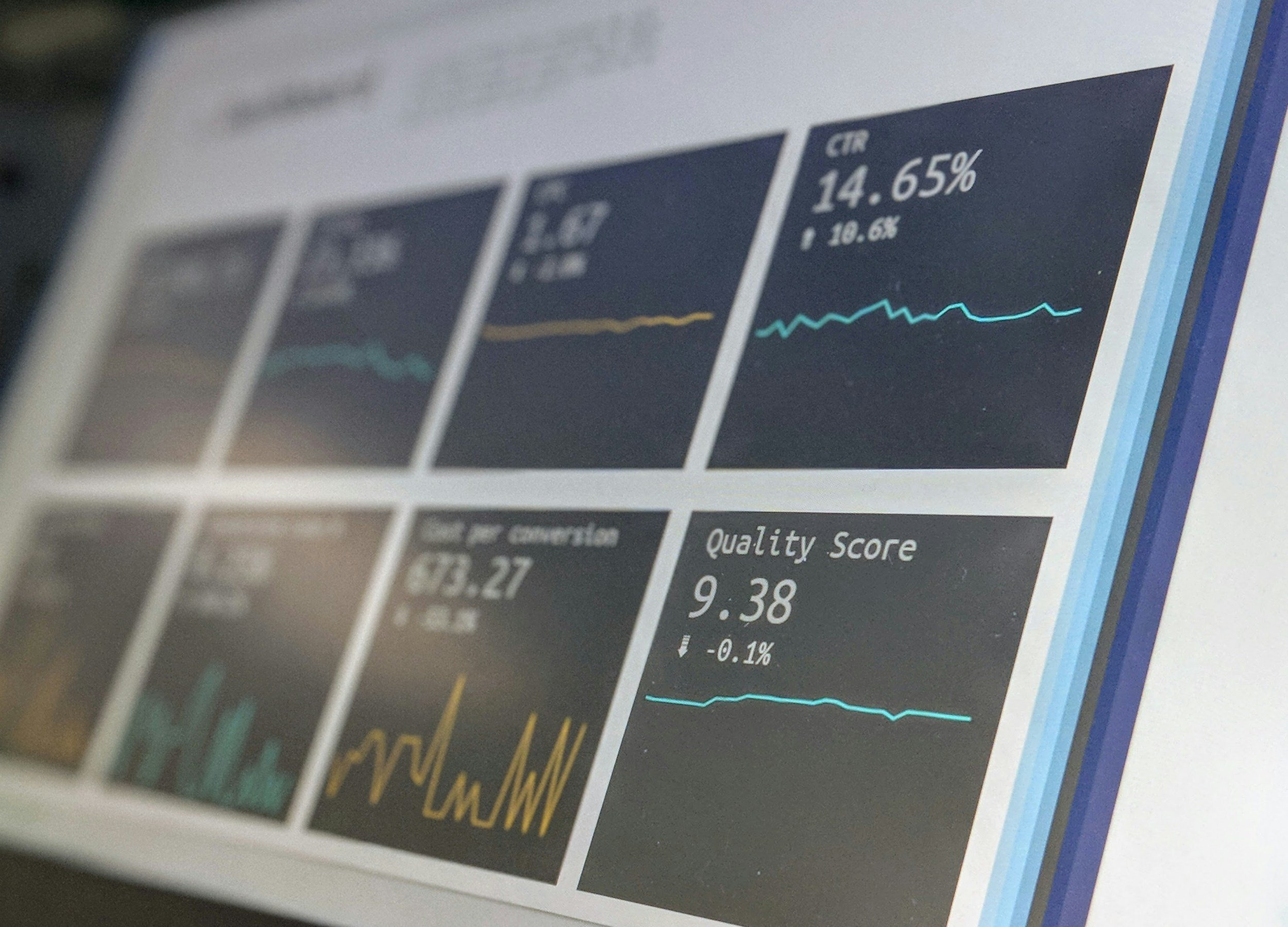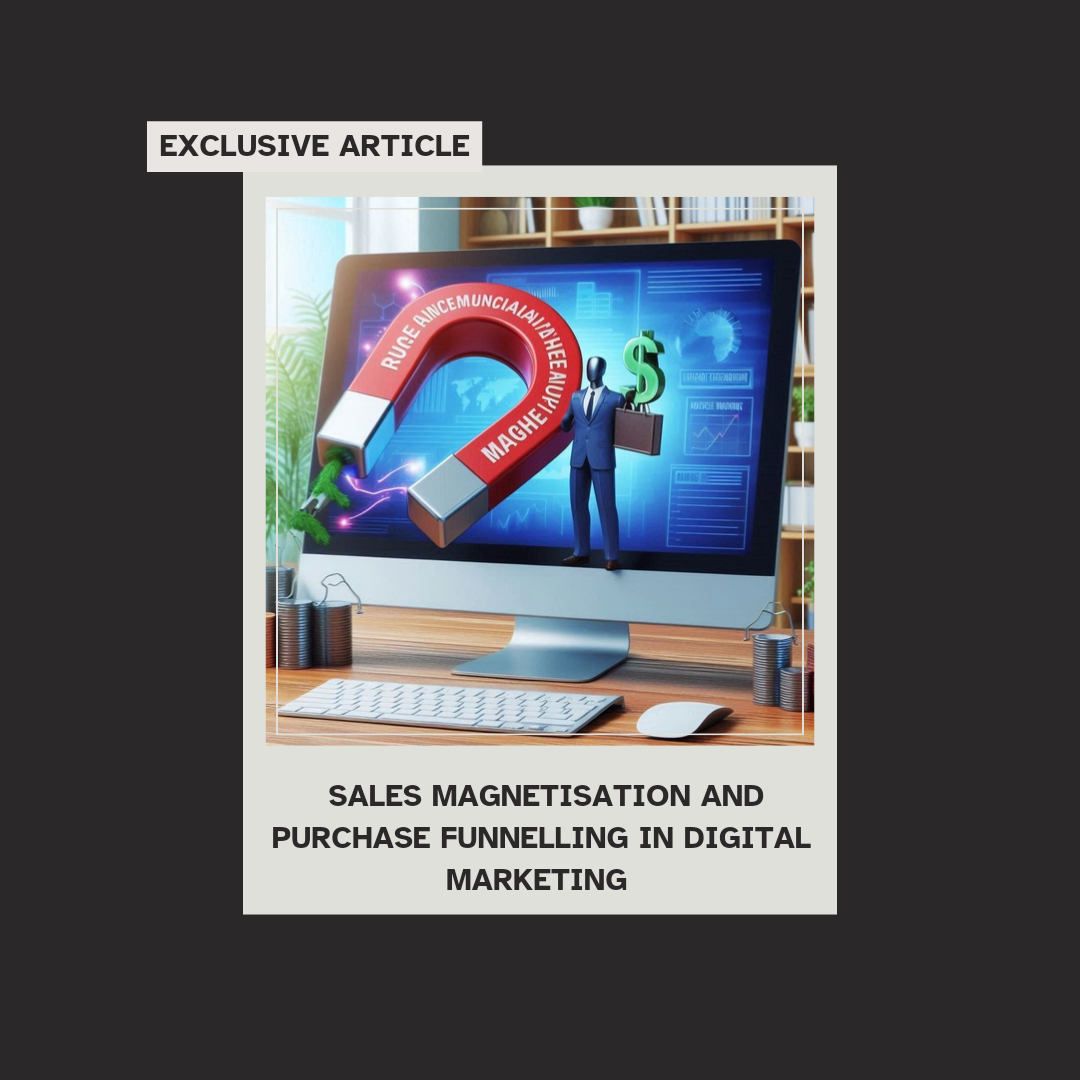Articles
Business and the Economy
EXCLUSIVE
ARTICLES
Make an impact today
Support my free content by contributing a donation.

The Power of Long-Tail and Short-Tail SEO Keywords for Websites and Blogs
In the realm of digital marketing, both long-tail and short-tail SEO keywords play critical roles in driving traffic and enhancing a website's visibility. Understanding their unique benefits can empower businesses and bloggers to devise effective content strategies.
Short-tail keywords, typically consisting of one or two words, such as "SEO" or "digital marketing," tend to attract a higher search volume. While they may generate significant traffic, competition for these keywords is fierce. As a result, ranking highly for short-tail keywords can be challenging, often requiring substantial resources and a well-established online presence.
Conversely, long-tail keywords are more specific, usually comprising three or more words, such as "how to improve SEO for small business" or "best practices for digital marketing in Australia." These keywords generally attract less search traffic but offer greater conversion potential. Users employing long-tail keywords are often further along in the buying cycle, seeking targeted information that aligns closely with their specific needs. By optimizing for these phrases, websites can attract a more engaged audience, resulting in higher conversion rates.
Integrating both short-tail and long-tail keywords into a content strategy allows businesses to tap into varying levels of search intent. A balanced approach can help optimize visibility for broader search queries while also capturing niche audiences that convert
In the realm of digital marketing, both long-tail and short-tail SEO keywords play critical roles in driving traffic and enhancing a website's visibility. Understanding their unique benefits can empower businesses and bloggers to devise effective content strategies.
Short-tail keywords, typically consisting of one or two words, such as "SEO" or "digital marketing," tend to attract a higher search volume. While they may generate significant traffic, competition for these keywords is fierce. As a result, ranking highly for short-tail keywords can be challenging, often requiring substantial resources and a well-established online presence.
Conversely, long-tail keywords are more specific, usually comprising three or more words, such as "how to improve SEO for small business" or "best practices for digital marketing in Australia." These keywords generally attract less search traffic but offer greater conversion potential. Users employing long-tail keywords are often further along in the buying cycle, seeking targeted information that aligns closely with their specific needs. By optimizing for these phrases, websites can attract a more engaged audience, resulting in higher conversion rates.
Integrating both short-tail and long-tail keywords into a content strategy allows businesses to tap into varying levels of search intent. A balanced approach can help optimize visibility for broader search queries while also capturing niche audiences that convert. As such, understanding and leveraging the strengths of both types of keywords is essential for any effective online marketing strategy.

Identifying and Understanding Competitive Market Differentiation
In a saturated marketplace, identifying and understanding competitive market differentiation is crucial for businesses striving to establish a unique value proposition. Competitive differentiation involves recognizing the attributes that set a company’s offerings apart from its rivals. This process begins with comprehensive market research to analyse competitors’ strengths and weaknesses, as well as pinpointing gaps in the market that can be exploited.
Businesses should consider several factors when differentiating themselves, including product quality, customer service, brand messaging, and pricing strategies. For instance, a company may choose to focus on premium quality materials and craftsmanship, appealing to discerning customers willing to pay a higher price for superior products. Alternatively, businesses might differentiate through exceptional customer service, fostering loyalty and creating a competitive edge.
Another avenue for differentiation lies in innovation—whether it’s through new technology, unique product designs, or pioneering service delivery methods. Companies that prioritize research and development can usher in groundbreaking solutions that challenge industry norms and enhance customer experiences.
To effectively communicate these differentiators, organizations must develop a clear and compelling brand narrative that resonates with their target audience. This narrative should encapsulate the essence of the brand, its mission, and the unique benefits customers can expect. Engaging storytelling not only captures attention but also builds a strong emotional connection with consumers.
In summary, identifying and understanding competitive market differentiation requires a strategic approach that encompasses in-depth market analysis, a focus on unique value drivers, and the effective communication of brand strengths. By leveraging these elements, businesses can carve out a distinctive niche in the marketplace, ultimately driving growth and sustainability.

Unveiling Consumer Spending Habits
Consumer spending habits play a critical role in shaping economic trends and guiding business strategies. As the landscape of consumerism evolves, understanding these habits becomes essential for organizations aiming to meet the needs of their target markets.
A notable shift has occurred in the wake of the COVID-19 pandemic, as Australians reassess their spending priorities. The emphasis has notably shifted towards essential goods and services, with a marked increase in spending on health, home improvements, and digital services. In contrast, discretionary spending, such as luxury items and experiences, has seen fluctuations as consumers adopt a more conservative approach to their finances.
Furthermore, the rise of digital shopping has fundamentally changed the retail experience. Consumers are increasingly favoring online platforms for their convenience and variety. They seek seamless experiences, where aspects such as fast delivery, easy returns, and personalized recommendations significantly influence their purchasing decisions.
Sustainability has emerged as a key consideration in consumer purchasing behavior. More Australians are willing to pay a premium for products that are eco-friendly and ethically sourced, reflecting a growing awareness of environmental issues and social responsibility.
In light of these trends, businesses must remain agile, adapting their marketing strategies and product offerings to resonate with the evolving values and preferences of consumers. As the market continues to mature, insights into consumer spending habits will be
Consumer spending habits play a critical role in shaping economic trends and guiding business strategies. As the landscape of consumerism evolves, understanding these habits becomes essential for organizations aiming to meet the needs of their target markets.
A notable shift has occurred in the wake of the COVID-19 pandemic, as Australians and others reassess their spending priorities. The emphasis has notably shifted towards essential goods and services, with a marked increase in spending on health, home improvements, and digital services. In contrast, discretionary spending, such as luxury items and experiences, has seen fluctuations as consumers adopt a more conservative approach to their finances.
Furthermore, the rise of digital shopping has fundamentally changed the retail experience. Consumers are increasingly favoring online platforms for their convenience and variety. They seek seamless experiences, where aspects such as fast delivery, easy returns, and personalized recommendations significantly influence their purchasing decisions.
Sustainability has emerged as a key consideration in consumer purchasing behavior. More Australians and others are willing to pay a premium for products that are eco-friendly and ethically sourced, reflecting a growing awareness of environmental issues and social responsibility.
In light of these trends, businesses must remain agile, adapting their marketing strategies and product offerings to resonate with the evolving values and preferences of consumers. As the market continues to mature, insights into consumer spending habits will be invaluable for driving growth and ensuring long-term viability.

How to Best Conduct Basic Competitive and Comparative Analysis
Conducting a competitive and comparative analysis is essential for businesses seeking to understand their position in the market and identify strategic opportunities. Here are key steps and considerations for effective execution:
Define Your Objectives and Scope
Start by clearly outlining what you wish to achieve with the analysis. Are you exploring new market entrants, enhancing product features, or seeking pricing strategies? Knowing your objectives will streamline your analysis and keep it focused.Identify Competitors
Develop a comprehensive list of direct and indirect competitors. Direct competitors offer similar products or services, while indirect competitors may solve the same customer problem through alternative means. Use industry reports, market research, and online tools to gather this information.Gather Data
Employ a variety of methods to collect data on your competitors. This can include:Website Analysis: Review their website for product offerings, pricing, and customer reviews.
Social Media Monitoring: Observe the engagement and strategies competitors use on platforms like Facebook, Instagram, and LinkedIn.
Customer Feedback: Assess reviews and testimonials on platforms like Google and industry-specific sites to understand customer sentiment.
Sales and Financial Reports: If available, analyze competitors’ financial performance to gauge their market position.
Perform SWOT Analysis
For each competitor, conduct a SWOT analysis (Strengths, Weaknesses, Opportunities, Threats). This helps in understanding where they excel and where they may be vulnerable, providing insights into potential market openings for your business.Benchmark Key Performance Indicators (KPIs)
Determine relevant KPIs for your analysis, such as market share, pricing strategies, customer acquisition costs, and customer satisfaction scores. Benchmark these metrics against your own performance to identify areas for improvement.Compare Offerings
Develop a comparison matrix to highlight differences and similarities in product features, pricing, and customer service. This visual representation can help in identifying unique selling propositions (USPs) and competitive advantages.Analyze Market Positioning
Assess how competitors position themselves in the market. Understand their branding, customer targeting, and messaging strategies. This will not only highlight competitive threats but also potential gaps in the market that your business can address.Synthesize Findings and Develop Strategic Recommendations
After analyzing the data, synthesize your findings into actionable insights. Recommend strategic responses based on the analysis, such as product development, repositioning, or marketing approaches to outpace competitors.
By systematically conducting competitive and comparative analysis, businesses not only gain critical insights into the competitive landscape but also equip themselves to make informed strategic decisions that can drive growth and enhance market positioning.

Leveraging Business Trends and Financial Forecasts
In today’s dynamic marketplace, leveraging business trends and financial forecasts has become essential for organizations aiming to secure a competitive edge. Understanding prevailing trends allows companies to anticipate shifts in consumer behavior, technological advancements, and industry standards, thereby enabling them to adapt proactively rather than reactively.
Financial forecasts play a critical role in this strategy. By analysing historical data and identifying emerging market indicators, businesses can project future performance, assess potential risks, and allocate resources more effectively. This proactive approach not only aids in budget planning but also informs strategic decision-making, allowing leaders to pivot quickly in response to changing conditions.
For instance, the rise of sustainable practices has fundamentally altered consumer expectations across various sectors. Companies that monitor such trends and incorporate sustainability into their value proposition not only enhance their brand reputation but also attract a growing segment of environmentally conscious buyers. Furthermore, robust financial forecasting can illuminate the viability of investing in green technologies or sustainable supply chains, minimising risk while capitalising on new opportunities.
Moreover, leveraging data analytics tools can significantly enhance the accuracy of both trend analysis and financial forecasting. By utilising real-time data, businesses can refine their strategies continually, ensuring that their initiatives are aligned with market demands and financial realities.
In conclusion, the synthesis of business trends and financial forecasts is not merely a strategic advantage; it is a prerequisite for long-term success in an ever-evolving economic landscape. Embracing this approach empowers businesses to
In today's dynamic marketplace, leveraging business trends and financial forecasts has become essential for organizations aiming to secure a competitive edge. Understanding prevailing trends allows companies to anticipate shifts in consumer behavior, technological advancements, and industry standards, thereby enabling them to adapt proactively rather than reactively.
Financial forecasts play a critical role in this strategy. By analyzing historical data and identifying emerging market indicators, businesses can project future performance, assess potential risks, and allocate resources more effectively. This proactive approach not only aids in budget planning but also informs strategic decision-making, allowing leaders to pivot quickly in response to changing conditions.
For instance, the rise of sustainable practices has fundamentally altered consumer expectations across various sectors. Companies that monitor such trends and incorporate sustainability into their value proposition not only enhance their brand reputation but also attract a growing segment of environmentally conscious buyers. Furthermore, robust financial forecasting can illuminate the viability of investing in green technologies or sustainable supply chains, minimizing risk while capitalizing on new opportunities.
Moreover, leveraging data analytics tools can significantly enhance the accuracy of both trend analysis and financial forecasting. By utilizing real-time data, businesses can refine their strategies continually, ensuring that their initiatives are aligned with market demands and financial realities.
In conclusion, the synthesis of business trends and financial forecasts is not merely a strategic advantage; it is a prerequisite for long-term success in an ever-evolving economic landscape. Embracing this approach empowers businesses to navigate uncertainties with greater agility, ultimately leading to sustainable growth and profitability.
Additional resource inside*

The Power of Lead Magnets in Content Marketing
Lead magnets are indispensable tools in content marketing, acting as powerful incentives that drive potential customers to engage further with your brand. A well-crafted lead magnet, such as an eBook, whitepaper, or exclusive webinar, offers tangible value in exchange for contact information, effectively bridging the gap between visitor engagement and conversion.
The strength of lead magnets lies in their ability to address specific pain points or interests of your target audience. By delivering content that resonates deeply with their needs, businesses can cultivate a sense of trust and authority. This approach not only increases the likelihood of capturing valuable leads but also sets the stage for nurturing these connections through targeted follow-up communication.
Moreover, lead magnets facilitate segmentation of your audience. By analyzing the type of content that attracts specific demographics, businesses can tailor their marketing strategies, ensuring that future communications are relevant and personalized. This level of targeted marketing enhances the efficiency of customer acquisition efforts and fosters long-term loyalty.
Ultimately, the strategic use of lead magnets transforms the traditional sales funnel into a more interactive and engaging experience, empowering businesses to not only capture leads but also to educate and inform potential customers, leading them closer to a purchasing decision. By harnessing the power of lead magnets, companies can significantly improve their content marketing effectiveness and drive sustainable growth.
Lead magnets are indispensable tools in content marketing, acting as powerful incentives that drive potential customers to engage further with your brand. A well-crafted lead magnet, such as an eBook, whitepaper, or exclusive webinar, offers tangible value in exchange for contact information, effectively bridging the gap between visitor engagement and conversion.
The strength of lead magnets lies in their ability to address specific pain points or interests of your target audience. By delivering content that resonates deeply with their needs, businesses can cultivate a sense of trust and authority. This approach not only increases the likelihood of capturing valuable leads but also sets the stage for nurturing these connections through targeted follow-up communication.
Moreover, lead magnets facilitate segmentation of your audience. By analyzing the type of content that attracts specific demographics, businesses can tailor their marketing strategies, ensuring that future communications are relevant and personalized. This level of targeted marketing enhances the efficiency of customer acquisition efforts and fosters long-term loyalty.
Ultimately, the strategic use of lead magnets transforms the traditional sales funnel into a more interactive and engaging experience, empowering businesses to not only capture leads but also to educate and inform potential customers, leading them closer to a purchasing decision.

How To Optimize and Identify Behavioral Changes and Industrial Trends in Online Marketing
In the evolving landscape of online marketing, understanding and optimizing behavioral changes and industrial trends is critical for businesses aiming to maintain competitive advantage. A systematic approach to identifying these behavioral shifts begins with robust data analytics. Utilizing tools such as Google Analytics, social media insights, and customer feedback can provide invaluable information on user interactions and preferences.
Businesses should focus on analyzing engagement metrics, such as click-through rates and time spent on site, to detect subtle changes in consumer behavior. Segmenting audiences based on demographics, purchasing patterns, and engagement levels allows marketers to tailor their strategies accordingly.
Simultaneously, staying attuned to industry trends, such as shifts towards sustainability or increased demand for personalized marketing, is essential. Regularly reviewing market research reports and competitor analysis can help identify these trends early. Engaging in continuous learning through webinars, industry conferences, and networking with peers enables marketers to remain agile in a rapidly changing environment.
Implementing A/B testing for marketing campaigns fosters a culture of experimentation. Marketers can compare different versions of content or ads to determine which resonates better with their audience. This iterative process not only refines current strategies but also uncovers potential emerging trends dictated by consumer preferences.
Finally, leveraging customer relationship management (CRM) systems can enhance a company’s ability to predict behavioral changes through the analysis of historical data. By integrating insights gathered from various touchpoints, businesses can create a holistic view of the customer journey, enabling them to adapt and optimize their marketing efforts proactively.
In summary, the successful optimization and identification of behavioral changes and industrial trends in online marketing hinges on a combination of data analysis, industry research, audience segmentation, and a willingness to iterate and innovate based on real-time feedback and performance
In the evolving landscape of online marketing, understanding and optimizing behavioral changes and industrial trends is critical for businesses aiming to maintain competitive advantage. A systematic approach to identifying these behavioral shifts begins with robust data analytics. Utilizing tools such as Google Analytics, social media insights, and customer feedback can provide invaluable information on user interactions and preferences.
Businesses should focus on analyzing engagement metrics, such as click-through rates and time spent on site, to detect subtle changes in consumer behavior. Segmenting audiences based on demographics, purchasing patterns, and engagement levels allows marketers to tailor their strategies accordingly.
Simultaneously, staying attuned to industry trends, such as shifts towards sustainability or increased demand for personalized marketing, is essential. Regularly reviewing market research reports and competitor analysis can help identify these trends early. Engaging in continuous learning through webinars, industry conferences, and networking with peers enables marketers to remain agile in a rapidly changing environment.
Implementing A/B testing for marketing campaigns fosters a culture of experimentation. Marketers can compare different versions of content or ads to determine which resonates better with their audience. This iterative process not only refines current strategies but also uncovers potential emerging trends dictated by consumer preferences.
Finally, leveraging customer relationship management (CRM) systems can enhance a company’s ability to predict behavioural changes through the analysis of historical data. By integrating insights gathered from various touchpoints, businesses can create a holistic view of the customer journey, enabling them to adapt and optimize their marketing efforts proactively.
In summary, the successful optimization and identification of behavioral changes and industrial trends in online marketing hinges on a combination of data analysis, industry research, audience segmentation, and a willingness to iterate and innovate based on real-time feedback and performance metrics.

How Aggregate Supply and Demand Reflects The Market Deficit of an Online Business
In the context of online businesses, aggregate supply and demand play pivotal roles in determining market equilibrium and subsequently the presence of market deficits. Aggregate supply represents the total output of goods and services that online businesses are willing to produce at various price levels, while aggregate demand reflects the total quantity of products that consumers are willing to purchase.
When an online business experiences a market deficit, it occurs when aggregate demand exceeds aggregate supply. This imbalance may stem from various factors, such as rapid shifts in consumer preferences, seasonal trends, or insufficient product availability. For instance, if a popular online retailer fails to anticipate a surge in demand for a newly launched product, it may quickly find itself unable to meet customer expectations. This inadequacy not only erodes customer trust but can also lead to lost sales opportunities.
Moreover, market deficits in an online business can signal underlying issues such as supply chain constraints or inefficiencies in inventory management. For example, disruptions caused by logistical challenges or increased shipping times can impede an online business's ability to provide adequate supply. Consequently, it becomes essential for these businesses to adopt real-time analytics and demand forecasting tools to maintain a more accurate alignment between supply and demand.
Understanding the dynamics of aggregate supply and demand allows online businesses to adapt their strategies effectively. By leveraging data-driven insights, businesses can optimize their operational processes, ensuring that they not only meet existing consumer demand but also anticipate shifts that may arise in the marketplace. Additionally, implementing flexible pricing strategies can help mitigate the impacts of supply shortages, thereby stabilizing revenues during periods of heightened demand.
Ultimately, awareness of aggregate supply and demand enables online businesses to navigate market deficits proactively, ensuring sustained growth and competitiveness in an increasingly dynamic digital landscape.

How to Reach Your Target Audience in Online Business
Reaching your target audience in online business is crucial for driving engagement, conversions, and long-term success. Here are several strategies to effectively connect with your desired demographic:
Identify Your Target Audience
Before you can reach your audience, you need to clearly define who they are. This involves researching demographics, interests, and purchasing behaviors. Use tools like surveys, social media analytics, and market research reports to gather data. Create detailed buyer personas that encapsulate the traits and motivations of your ideal customers.
Leverage Social Media Platforms
Social media is a powerful tool for reaching your target audience. Each platform caters to different demographics, so choose the ones that align with your audience's preferences. For instance, Instagram is popular with younger audiences, while LinkedIn is favored by professionals. Tailor your content to fit the platform's style and your audience's expectations—whether through engaging visuals on Instagram or informative articles on LinkedIn.
Content Marketing
High-quality content that resonates with your audience can establish authority and build trust. Develop blog posts, videos, infographics, and podcasts that provide value to your target audience. Focus on their pain points and interests. Implement SEO best practices to ensure your content ranks well in search engine results, making it more discoverable to those looking for information in your niche.
Email Marketing
Build an email list to maintain direct communication with your audience. Send personalized content and promotions that speak directly to their needs and interests. Segment your email list based on customer behavior and preferences to increase engagement rates. Regular newsletters can keep your brand at the top of their minds while driving traffic to your website or social media channels.
Paid Advertising
Consider using targeted advertising on platforms like Google Ads and social media. These platforms allow you to define specific demographics, interests, and behaviors to ensure your ads are seen by those most likely to convert. Monitor and analyze the performance of your campaigns, adjusting them based on what works best for your audience.
Collaboration and Networking
Partner with influencers or businesses that share your target audience. This can provide access to a wider audience and build credibility for your brand. Take part in online forums and discussion groups related to your industry to further establish your presence and connect with potential customers.
By combining these strategies and consistently adapting to your audience’s changing preferences, you can effectively reach and engage your target audience in the online business landscape. Understanding and meeting their needs will ultimately lead to increased loyalty and growth for your business.

Modern Lead Magnets, Product Discrepancy and Perfect Pricing Completion: Part 1
In today's competitive marketing landscape, understanding the dynamics of modern lead magnets, product discrepancies, and perfect pricing completion part 1 is essential for businesses aiming to enhance customer acquisition and retention.
Modern Lead Magnets
Lead magnets have evolved significantly from the traditional eBooks and whitepapers. Today's lead magnets encompass a diverse range of offerings, such as interactive webinars, free trials, and exclusive access to premium content. The key to an effective lead magnet lies in its ability to provide immediate value while aligning closely with the target audience’s pain points. By leveraging insights from customer behaviour and preferences, businesses can craft lead magnets that not only capture attention but also facilitate a seamless transition into the sales funnel.
Product Discrepancy
Product discrepancy refers to the gap between customer expectations and the actual product experience. This discrepancy can manifest in various forms, including differences in perceived value, quality, and functionality. In an era where consumers are more informed and vocal than ever, businesses must ensure that their offerings consistently meet or exceed expectations. Addressing product discrepancies involves thorough market research, ongoing customer feedback loops, and committing to continuous improvement. Companies that proactively manage this aspect can enhance customer satisfaction, foster brand loyalty, and reduce churn rates.
Perfect Pricing Completion
Achieving perfect pricing completion is about finding the optimal price point that reflects the product’s value while remaining competitive. This involves a comprehensive analysis of market trends, customer willingness to pay, and the perceived value of the product. Businesses need to adopt a dynamic pricing strategy that allows for adjustments based on market feedback and changing consumer sentiment. Additionally, effective communication of pricing benefits can help mitigate potential hesitations from customers, reinforcing the value offered. By perfectly aligning the pricing strategy with customer expectations and market dynamics, businesses can optimise conversions and drive revenue growth.
In conclusion, integrating these elements—modern lead magnets, diligent management of product discrepancies, and perfect pricing completion—will empower businesses to create a compelling value proposition in an ever-evolving marketplace.

How Sales Magnetisation and Purchase Funnelling Works in Digital Marketing
In the rapidly evolving landscape of digital marketing, the concepts of sales magnetization and purchase funneling play critical roles in converting leads into loyal customers. Sales magnetization refers to the strategic process of attracting potential customers by creating compelling offers, utilising targeted content, and optimising brand visibility. This draws in visitors who are not just browsing but are actively seeking solutions that your product or service provides.
Effective sales magnetization begins with thorough research into your target audience’s preferences and pain points. By developing buyer personas and leveraging data analytics, businesses can tailor their messaging to resonate deeply with prospective customers. This engagement often occurs across multiple platforms, including social media, email marketing, and content marketing, where touchpoints are designed to capture interest and promote interaction.
Once potential customers are drawn in through these initial touchpoints, the process of purchase funneling begins. The purchase funnel is essentially a visual representation of the customer journey from awareness to conversion. It consists of several key stages: awareness, interest, consideration, intent, evaluation, and purchase. Understanding these stages is crucial for marketers, as it allows them to develop targeted strategies for nurturing leads at each step.
At the awareness stage, the focus is on creating brand recognition through informative content, advertisements, and social media engagement. As leads move to the interest stage, they seek deeper insights and evaluations of offerings, making compelling product descriptions and client testimonials vital. In the consideration stage, this could involve more personalised communication, such as email drip campaigns tailored to respond to specific inquiries or behaviours.
The intent stage is pivotal; this is where potential customers are deciding between options. Strategies such as retargeting ads, limited-time offers, and detailed comparisons can be instrumental at this junction. Finally, as prospects reach the evaluation and purchase stages, a seamless transaction experience, alongside follow-up communications, ensures not just a sale but also sets the foundation for future loyalty.
In conclusion, integrating sales magnetization with an effective purchase funnel allows businesses to not only attract potential customers but also guide them through a structured journey, enhancing conversion rates and fostering long-term relationships. This holistic approach is imperative in today’s competitive digital marketplace, ensuring that every step of the customer journey is optimised for maximum engagement and satisfaction.

Intricacies of Product Demand and Services in an Online Business
In the realm of online business, understanding the intricacies of product demand and service offerings is essential for driving growth and sustaining competitive advantage. At the core, product demand is influenced by a multitude of factors including market trends, consumer behaviour, and seasonal fluctuations. An online retailer must engage in continuous market research to discern these patterns, allowing them to tailor offerings in response to shifting demands.
One of the significant complexities is the interaction between product visibility and consumer awareness. In digital marketplaces, products compete for attention against a backdrop of numerous alternatives. This necessitates an effective online marketing strategy that not only highlights the unique selling propositions of a product but also establishes a brand’s credibility. Leveraging search engine optimisation (SEO) and social media marketing can drive traffic and enhance visibility, ultimately translating to higher demand.
Moreover, the provision of services alongside product offerings can significantly augment consumer satisfaction and loyalty. Online businesses that excel in customer service, such as prompt responses to inquiries or streamlined return processes, can elevate the overall shopping experience. Services like personalised recommendations and responsive customer support not only fulfil immediate consumer needs but also foster long-term relationships, paving the way for repeat business.
Additionally, it is imperative for online businesses to adapt their inventory and service strategies in alignment with data analytics insights. By scrutinising purchasing trends and customer feedback, businesses can refine their inventory management practices, ensuring that they not only meet current demand but also anticipate future needs. This agility in operations is a critical component in a fast-paced digital environment, where consumer preferences can shift rapidly.
In conclusion, navigating the intricacies of product demand and services in an online business framework requires a strategic approach that combines market intelligence, strong marketing techniques, and exemplary service delivery. By doing so, businesses can position themselves favourably within the marketplace, enhancing both demand for their products and the overall customer experience.

